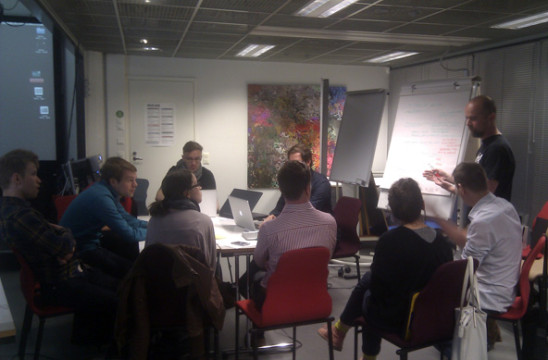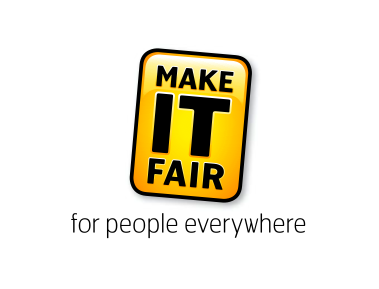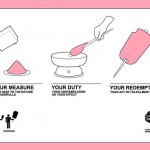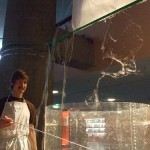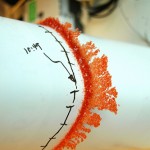A couple of weeks ago I did my duty as a diligent cultural worker and took part in workshops to develop the art and culture vision for the Helsinki city and the sustainable tourism strategy for Suomenlinna.
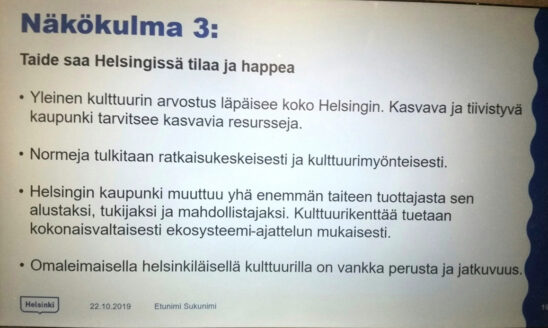
In the Helsinki City workshop one of the slides said that ‘Art will get more space and oxygen’ and that ‘The city will change from a producer of art to a platform, supporter and enabler. The cultural field is supported holistically via ecosystem thinking.’
If this would actually happen (fingers crossed that it will!) then this would be drastic reversal of the policies of the city and the cultural ministry during the past years. For a long time the needs of the nimble and networked grassroot scene have been pretty much ignored, while to focus has been in building bigger bureaucracies with more top-down control and centralising the resources to a few big institutions.
The Suomenlinna workshop that took place on the same day was very inspiring, mostly because of the presentation about how Stevns Klint World Heritage site in Denmark had *failed* in realising their sustainable tourism strategy. They had produced a strategy document that seemed great, but then nothing actually happened. Here is how it failed (writing these since my photos of the slides are so low quality):
- Wishful thinking – underestimated the effort needed
- No common understanding of sustainable tourism, vision or goals
- Not sufficiently anchored in individual organisations / planning (most organisations cannot suddenly take new obligations)
- Meetings really only included formal key stakeholders
- No systematic follow-up
The failure caused a lot of frustration, but the folks at Stevns Klint were able to turn things around and this is how they did it:
- One year of monthly meetings
- Getting to know each other
- Defining who actually does what
- Understanding what is sustainable tourism
- What is really the joint vision and goals?
To me this sounds a bit like the process HIAP had with Mustarinda in the Post Fossil Transition project. We had to spend the first one year in monthly meetings (mostly internal ones, some were opened up as public events) to get a shared understanding of what we want to achieve, and to also to get an understanding of how different we are as organisations.
The concluding slide of Stevns Klint presentation featured their learnings:
- It takes time and effort
- Essential to have a joined understanding
- Essential that key stakeholders take real ownership (throughout their entire organisation)
- Essential to include and empower local community (commercial and non-commercial)
- It is meaningful to work for a higher cause
In general the message of the Stevns Klint presentation was that a strategy is just a piece of paper, what matters is what actually happens.
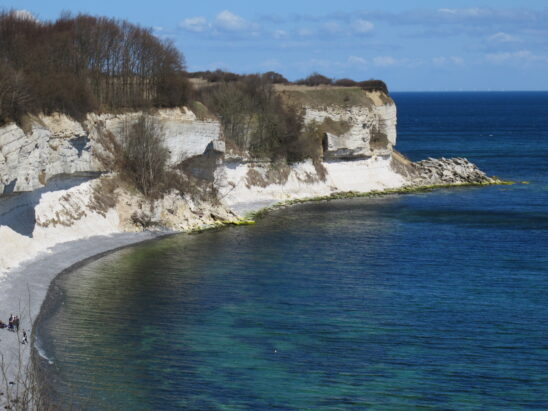
(The original post on FB)
